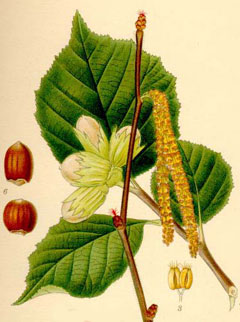Adventures In Medicine Making
Populus trichocarpa
G’day Adventurers! Walking through the forest at this time of year can be a bit bland….Not much to eat other than the soup de jour: cream of lichen and twig! Hmmmm, that sounds great, but I think I’d rather make some beautiful sore muscle rub with some resinous tree buds! ENTER: Populus trichocarpa aka poplar, cottonwood, aspen or balsam tree. Any tree from the genus populus will work, however Populus trichocarpa or the Black Cottonwood tree is best for its large resinous buds. I’ve had a hard time locating a stand of black cottonwood trees in my area, so today I picked from a type of poplar tree that I have yet to identify!
Populus trichocarpa
Usually it is a huge no-no in the foraging world to pick something un-identified! However, being positive that it was some type of poplar tree, I was A-OK to forage. Genus populus is a sub group belonging to the Salicaceae family, the same family as another medicinal plant, the great Willow tree. You’ll find them in riparian and wetland areas as they thrive off of the readily available nutrients that riverbanks and floodplains have to offer. Black cottonwoods tend to thrive further south on the west coast of B.C, whereas Balsam poplars like it further north, from the upper Stikine and over east to the Rockies. You’ll find some hybridized versions of these two types where their ranges overlap.
They shed their oval-y wedge shaped leaves every fall, so pick out your stand in the spring, as you cannot miss the cotton like hairs that float around like snow at this time of year. Poplars are the underdog of the tree world. Their ability to grow very big, very fast has resulted in plantations of hybridized poplars for the manufacturing of….womp, womp, womp, paper! Oh, and chopsticks, matches and the boxes in which camembert cheese is sold in.
Populus trichocarpa
If only the world knew of its significant anti-infectant and pain relieving properties that it has to offer! The best time to collect the resinous buds is right before they bust open, which on the coast, is January and February! I went out after a big windstorm and picked off of fallen branches. This is the easiest way to collect the buds, as the trees are so tall that you would have to lug a ladder with you to reach anything. After collecting a whack of branches, I brought them home, and, with some help from a two year old, we picked all the healthy buds off and put them in a bowl, leaving any moldy or black looking ones out.
Now, there are a couple of methods to extract the resins. The easiest, tried and true method that I have found is to place the buds in a mason jar and cover with virgin olive oil, cap with a cloth and elastic band, then, make sure to stir the buds everyday UNTIL they all sink below the olive oil. This is important, otherwise the buds will get moldy and your batch of oil will smell like compost! Let it sit for months or a year, the longer the stronger. There are a few other methods that use heat to extract even more resin , however, they are more time consuming and require heating for long periods of time.
Populus trichocarpa
Once your buds have been macerated over a few weeks or months, you will carefully pour off the oil from the buds and put it in a separate container. Gently press the buds in the original jar to release any left over oil, put this in yet another container to use this for massage oil, as it will rancidify more quickly than the salve that you are about to make! With your separated jar of poplar bud oil you can measure out the same amount of beeswax shavings (1:1 ratio by volume). Melt down the beeswax in a double boiler, then add the poplar oil, mix until everything is melted, pour in a jar, cool, seal and label!
Balm of Gilead
You now hold some magical tree medicine to rub on sore muscles and to help heal cuts and scrapes. In other words, the salve in which you have just made has active ingredients called salicin and populin, which are the same anti-inflammatory and pain reliving properties that the drug Aspirin has. It also heals all kinds of skin irritations, from sunburns to eczema! A truly indispensable item for your first aid kit!
There you have it, good job! I have long since called this salve; ‘Balm Of Gilead’, however, since writing this article, I have learned that true balm of gilead, which is mentioned about six times in the bible for being a place near Egypt and also a healing substance, can only be made from the resin of the Myrrh shrub, which is a totally un-related species to poplar. I still like to call it balm of gilead, but you can call it whatever you like!!! Thanks for tuning in….til next time!
PS Here are some links to check out a more in-depth look at Populus trichocarpa and its uses.
http://www.ryandrum.com/twobudsoneleaf.htm
https://www.learningherbs.com/balm_of_gilead.html
http://firstways.com/2012/04/19/cottonwood-antiseptic-salve/
http://www.for.gov.bc.ca/hfd/library/documents/treebook/blackcottonwood.htm














